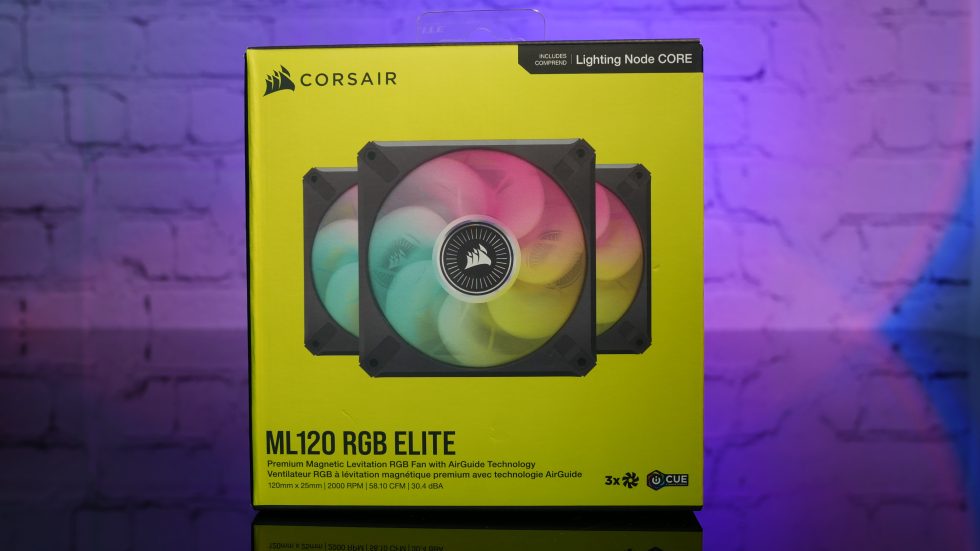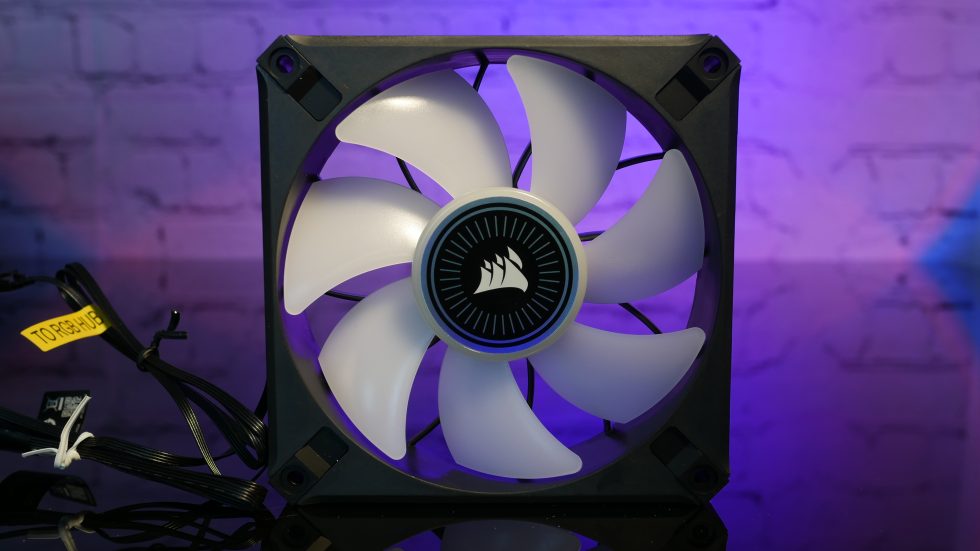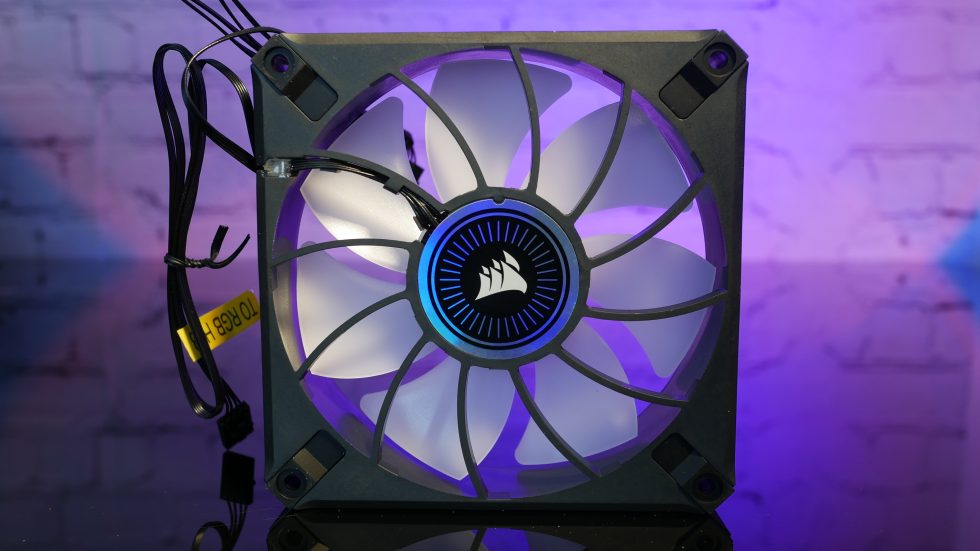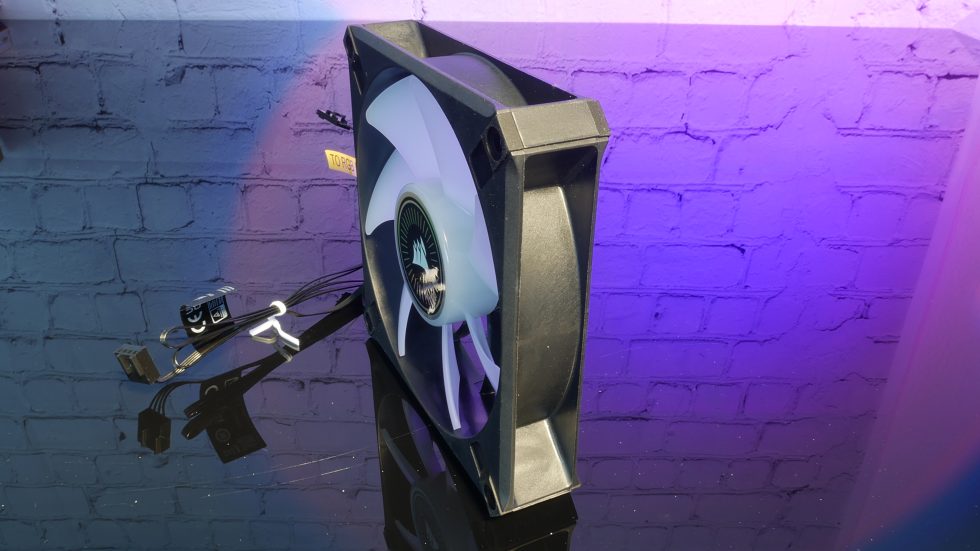The new Corsair iCUE ML120 RGB ELITE is a rather fresh player on the market as a 120 mm case fan that has to show today whether it is worth the high purchase price of almost 30 Euros. The lower the price, the more likely you are to tolerate weaknesses, of course. But Corsair already sets the bar quite high and we are curious to see what the result will be in the end. Anyone can be expensive, but can they be really good? Well, I will at least spoil now that we were not dissatisfied at the end. Even though the play of light and shadow worked well, as always. This time, the shadows were rather smaller and certainly not drop shadows.
For just under 29 Euros, this ARGB fan is an offer from the upper price segment and the 3-pack with integrated fan hub costs almost 98 Euros. But as long as the fan also performs as promised, it’s just okay. The new fan is at least exactly within the norm with its 25 mm thickness, which of course makes it more comparable in the end, especially since the rest of the design also tends to follow current trends and does not reveal any daring design stunts at first glance. On the contrary.
Only the fan including screws is included, which is a bit tricky because the RGB fans cannot be easily cascaded due to the proprietary connectors. So you have to buy a 3-pack with LED controller or better Corsair’s Commander if you don’t use a Corsair RGB case. Here, the customer is somewhat educated to brand affinity, but that’s nothing new in the end. Incidentally, there are also suitable adapters in the Amazon for no money, which allow the connection to normal ARGB systems.
Corsair again relies on a passive, magnetic barometric bearing. The operation of such magnetic bearings relies on the forces of permanent magnets. Thus, a kind of center position is automatically established, which is then also maintained as long as this force is effective. Force-related position deviations should not actually exert any negative influences here if the permanent magnets are strong enough. However, passive magnetic bearings of this type are almost always still combined with a conventional bearing for safety, since a contactless bearing arrangement in the radial and axial directions using a passive bearing alone is not possible due to the design. This should always be kept in mind, especially for “overhead mounting”. The bearing is also the reason why you can’t easily disassemble these fans.
The rotor as a counterpart to the black stator is a translucent block with a total of seven rotor blades, slightly rounded and beveled edges and corners. The translucent fan blades and the RGB sprinkling in the hub as well as the omission of an RGB outer ring preserve the original rotor diameter, which should naturally also benefit the performance. Everything is supported by a black, plain frame that does not hide any secrets visually at first glance. The PWM-controlled fan manages a speed range from under 100 to up to 2000 rpm and only offers a semi-passive mode (fan stop) at 84(!) rpm with PWM control.
The decoupling with the laterally inserted rubber corners is well solved, since it does not twist with the screw tightened. The gap dimensions and surface finish are very good. The power consumption is exemplary low at full speed with less than 1.5 watts for the fan (without ARGB). But I’ll get to all the details in a moment, because especially PWM-controlled, these fans are a smooth blast, without the marketing even mentioning this, because the data sheet only states the more than four times higher DC value as the minimum speed. Incomprehensible, but we have already pointed out the error to Corsair.
| Form factor | 120 mm |
| Strength | 25 mm |
| PWM | Yes |
| RGB | ARGB (hub) |
| Decoupled | Yes |
| Color Frame | Black |
| Accent color | None |
| Color rotor | Translucent |
| Weight in g | 186 |
| min. speed | 450 rpm (measured 459 rpm DC, 84 rpm PWM) |
| max. speed | 2000 |
| Volume flow m3/h | 98.71 |
| Flow rate CFM | 58.10 |
| static pressure mmH2O | 2.9 |
| Sound pressure dBA | 30.4 dBA |
| Life Time hrs | n.a. |
On the next page you will first see how and what we test and why. Understanding the details is incredibly important in order to be able to objectively classify the results later. The differences between many models are more in the details and the best fan for all situations can hardly exist. There is a certain optimum in every situation and, of course, good all-rounders. But they usually have their price. However, if you are planning very specifically with 60 mm radiators, for example, you might be able to save money by choosing the best model for your intended use, which might not perform so well as a case fan. And vice versa, of course.
49_002526_AA_WW_ML_RGB_ELITE_QSG







































18 Antworten
Kommentar
Lade neue Kommentare
Moderator
Veteran
1
Urgestein
Urgestein
Urgestein
1
Urgestein
Urgestein
Urgestein
Urgestein
Urgestein
Urgestein
Urgestein
Urgestein
Urgestein
Mitglied
Urgestein
Alle Kommentare lesen unter igor´sLAB Community →